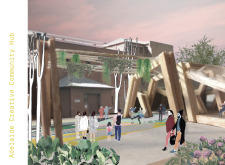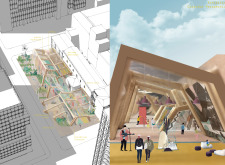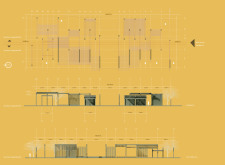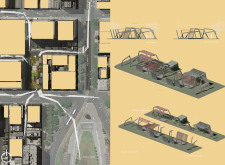5 key facts about this project
## Overview
The Adelaide Creative Community Hub is located in the center of Adelaide, Australia, and serves as a venue for artistic collaboration and community engagement. The design harmonizes modern architectural principles with ecological considerations, aiming to create a functional environment that fosters social interactions among artists, musicians, and local residents.
### Spatial Strategy
The architectural layout features a dynamic configuration of intersecting volumes, promoting an open and inviting atmosphere. Key to the design are the various open spaces designated for performances, workshops, and exhibitions, which facilitate interaction between internal and external environments. Flexible areas are incorporated throughout to accommodate a range of activities, from private workshops to public gatherings, enhancing accessibility and visibility. The building's orientation encourages community use and promotes regular participation in cultural events.
### Materiality and Sustainability
Material choices reflect a commitment to sustainability and environmental integration. Recycled wood is utilized for structural elements and finishes, contributing to both aesthetics and ecological responsibility. A robust steel framework ensures structural integrity while enabling expansive open spaces. Glass panels are strategically placed to maximize natural light and create a visual connection with the outdoors, further integrating the interior with the exterior environment. Additionally, green roofs and living facades enhance biodiversity, improve air quality, and contribute to temperature regulation. Biophilic elements within the design aim to enhance visitor well-being, while interactive facades incorporate shading devices that adjust to solar exposure, optimizing energy efficiency.
Located strategically along existing urban pathways and streets, the hub enhances connectivity within the city and is positioned to attract both locals and tourists, contributing to the socio-economic vitality of the area.





















































